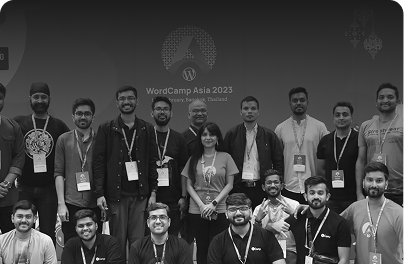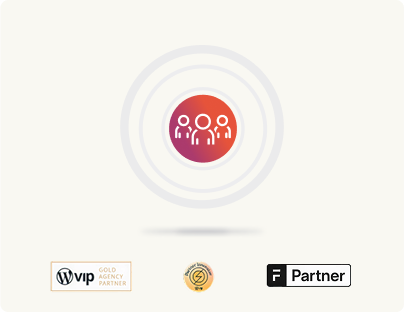Strapi vs headless WordPress: How upgrades, support, and maintenance works for each CMS
For enterprises, a CMS is more than just a platform for managing content. It’s a crucial part of the digital infrastructure that underpins business growth, customer experience, and operational efficiency. This is why CMS maintenance is a top priority when selecting a CMS—after all, it’s central to the overall business continuity in the long term. Upgrades, too, count toward this. And so do support options which contribute to both these.
When comparing Strapi vs WordPress as a CMS in terms of maintenance, upgrades, and support, the differences are evident in their ease of use, community backing, and ongoing management.
Generally, WordPress (even in a headless or hybrid setup) offers a more streamlined, user-friendly approach. Here’s a deeper look at how maintenance, upgrades, and support options work for each CMS. Let’s look at Strapi first.
Maintaining a Strapi stack
Strapi, as a headless-only CMS, offers a high level of flexibility and customization. However, this flexibility also means that maintenance can be more complex, especially for enterprises. Since Strapi is entirely API-based, it requires ongoing attention to both the backend API management and the integrations between Strapi and other tools or systems within the organization (in addition to the multiple frontends).
Maintaining the backend
Strapi’s backend is highly customizable, which is one of its key strengths. However, this also means that every update to Strapi will require adjustments to custom configurations or plugins that enterprises and large organizations would have typically developed over time. Additionally, Strapi also requires manual intervention and potentially custom development to implement updates. In addition, Strapi may require updates to its core system, plugins, or dependencies, which could involve more technical expertise.
Maintaining the frontend(s)
Using Strapi (or even WordPress in a headless or hybrid setup for that matter) also naturally means there’s maintenance around the connections between Strapi and all the frontend applications (usually built with frameworks like React, Angular, or Vue.js). This includes ensuring that the content delivery is optimized at all times.
Maintaining a headless WordPress stack
WordPress, even in a headless setup, benefits from its mature ecosystem when it comes to maintenance. It comes with a backend that’s relatively easy to maintain. While the separation of the backend and frontend in a headless WordPress setup requires regular attention to API integrations, it’s far simpler than managing a fully custom solution like Strapi.
Maintaining the backend
Headless WordPress handles much of the backend maintenance automatically, with automatic core updates, security patches, and plugin updates. This reduces the need for manual intervention, allowing non-technical teams to manage the platform with minimal effort. WordPress also offers a wide array of plugins that integrate easily with third-party tools, minimizing the need for custom development. This reduces maintenance overhead too. Additionally, as WordPress is a widely used platform, there is a large support community available for troubleshooting and guidance.
Maintaining the frontend(s)
With headless WordPress, the frontend is separated from the CMS, allowing developers to use modern frontend frameworks like React, Vue.js, or Angular. The separation ensures that updates to WordPress’s backend don’t directly impact the frontend, but maintenance is required to ensure API stability and optimize performance for content delivery.
Applying updates to Strapi
Strapi’s developer-first philosophy offers unparalleled flexibility, but this often comes at the cost of update simplicity.
Strapi core updates: flexibility with complexity
Here’s what you’re typically looking at with Strapi core updates.
- Manual updates:
Strapi updates require manual intervention, especially if the implementation includes customizations, plugins, or APIs. Developers must carefully review the release notes, identify potential breaking changes, and modify configurations or custom code accordingly. - Dependency management:
Being Node.js-based, Strapi depends heavily on npm packages. Updates often involve resolving dependency conflicts, testing compatibility, and, in some cases, rewriting parts of the codebase to align with the new core version. - API adjustments:
Core updates may introduce changes to Strapi’s APIs. Enterprises using Strapi must ensure all connected frontends and integrations are tested and updated to avoid disruptions in content delivery.
Frequent breaking changes and backward compatibility issues
One of the most significant maintenance challenges with Strapi is its rapid development cycle. While this ensures the CMS remains up-to-date with the latest technologies, it can also lead to compatibility issues, particularly with major version upgrades.
Strapi’s frequent major updates often introduce breaking changes. These changes are typically necessary for improving functionality or adopting new technologies but can disrupt ongoing projects that rely on older API structures, plugins, or database schemas.
Take the latest Strapi 5 update, for example. The Strapi 5 update involved significant changes to API responses. This required frontend teams to adapt to new structures and required months of work to upgrade even a single version.
For organizations with long-term deployments, such backward compatibility issues can cause delays and require extensive testing and redevelopment of parts of the application.
Migration complexity
Upgrading between major versions can involve significant challenges, including the need for database migrations and updates to API structures. In some cases, this can mean extensive downtime or testing to ensure that the new version integrates smoothly with existing infrastructure.
Applying updates to WordPress
WordPress, even in a headless or hybrid setup, takes a more refined approach to core updates, reflecting its years of evolution as a CMS.
WordPress core updates: maturity and ease
When viewed through the lens of maintenance and updates, WordPress emerges as the more enterprise-friendly option due to its robust support network, automated processes, and mature approach to stability and compatibility. Here are some features that make it so.
- Automatic updates:
WordPress supports automatic updates for core, themes, and plugins, significantly reducing the manual overhead for maintenance teams. While headless implementations may require additional testing, these updates are generally non-disruptive. - Backward compatibility:
One of WordPress’s greatest strengths is its commitment to backward compatibility. Core updates rarely break existing functionality, making them safer to implement even in complex environments. This maturity ensures that enterprises can update without the constant fear of regression issues. - Plugin and theme ecosystem:
The extensive ecosystem of WordPress plugins and themes is tightly integrated with core updates. Developers of these plugins are notified well in advance of upcoming changes, ensuring their products remain compatible with the latest WordPress version. This coordination simplifies maintenance for hybrid setups where plugins play a role in backend operations. (Theme updates, too, support when looking at a hybrid setup.) - Decoupled APIs:
In a headless or hybrid setup, WordPress’s REST and GraphQL APIs are stable and minimally impacted by core updates. This stability ensures seamless communication between the WordPress backend and frontend applications. - Built-in tools for updates:
WordPress provides user-friendly tools for updates, including one-click core updates and clear notifications for administrators. This streamlined approach allows enterprises to maintain their CMS without relying solely on developer intervention
While both platforms offer robust solutions for headless and hybrid CMS needs, WordPress’s mature update process is a clear advantage. Its automated features, backward compatibility, and focus on stability make it a dependable choice for enterprises. Strapi’s flexibility is valuable but comes with a complexity that can hinder smooth operations, particularly in large-scale implementations.
For enterprises evaluating CMS platforms, support is another critical consideration, especially for maintenance and updates. And more so when complex, headless infrastructures need to be supported. Let’s look at Strapi first.
Strapi’s support options
Strapi, with its developer-first design and open-source foundation, provides flexibility for enterprises but faces notable challenges when it comes to support, especially in the context of maintenance and updates.
1. Limited ecosystem for enterprise-grade support
Strapi’s support ecosystem, while growing, is still relatively nascent compared to mature CMS platforms like WordPress. Enterprises often require rapid responses to technical challenges, particularly during critical updates or maintenance tasks. Strapi’s reliance on community forums, GitHub issues, and limited documentation can make it difficult for organizations to resolve issues efficiently.
- Community-reliant troubleshooting: Many solutions rely on user-generated content, which can vary in accuracy and relevance. Enterprises might struggle to find precise guidance for unique or complex implementations.
- Paid support constraints: Strapi’s Enterprise Edition does offer premium support, but it comes at a cost and is typically SLA-based, meaning there’s a defined limit to the level of help provided.
2. Expertise dependency
Since Strapi’s strength lies in its customizability, maintaining a Strapi setup often demands a highly skilled development team.
- Custom code bottleneck: Enterprises with highly customized Strapi implementations may face delays or difficulties when support is needed for code-specific issues.
- Knowledge silos: Support often depends on the internal team or third-party agencies familiar with the setup, which can hinder scalability and add complexity during transitions or staff turnover.
3. Updates and compatibility issues
Strapi updates, while powerful, can disrupt workflows or integrations without proper support channels.
- Breaking changes risk: Core updates can introduce breaking changes that require immediate troubleshooting. Enterprises may need to allocate significant resources for testing and resolving such issues.
- API adjustments: Since Strapi is API-first, ensuring compatibility across all integrations during updates can be resource-intensive, and external support may not always be equipped to handle these nuances efficiently.
WordPress’s support options
WordPress, with its decades-long history and enterprise adoption, has built a robust and scalable support ecosystem that excels in handling maintenance and updates for large-scale implementations.
1. Comprehensive support ecosystem
WordPress offers a multi-layered support infrastructure that caters to enterprises through official resources, third-party agencies, and a vast community.
- Managed services: Enterprise-focused offerings like WordPress VIP include dedicated support teams for seamless updates, security patches, and performance optimization.
- Third-party expertise: A global network of agencies and WordPress professionals provides reliable support, from routine maintenance to complex troubleshooting.
2. Advanced documentation and resources
WordPress boasts a wealth of official and community-created resources that simplify support for maintenance and updates.
- Extensive documentation: From core updates to plugin development, WordPress provides well-documented processes for nearly every aspect of its ecosystem.
- Proactive tooling: Built-in features like one-click updates, rollback options, and detailed error logging make self-support for enterprises more feasible.
3. Automated updates and compatibility safeguards
WordPress minimizes disruption during updates with features designed for enterprise stability.
- Automatic updates: Security patches and minor updates are applied automatically, reducing the risk of vulnerabilities. Enterprises can configure these settings to match their needs.
- Backward compatibility: WordPress’s commitment to backward compatibility ensures that updates rarely cause system-wide issues, a significant advantage over platforms like Strapi.
4. API maturity and integration stability
Even in headless or hybrid setups, WordPress’s REST and GraphQL APIs are stable and widely supported by frontend frameworks.
- Standardized API behavior: API changes are minimal and well-documented, ensuring smooth transitions during updates.
- Developer resources: A plethora of guides, plugins, and tools exist to assist developers in integrating or troubleshooting APIs effectively.
5. Community-driven innovation
WordPress’s massive user base contributes to ongoing improvements, from plugins to core functionalities, ensuring enterprises have access to cutting-edge solutions.
For enterprises evaluating CMS platforms, support is a critical consideration, especially for maintenance and updates. While Strapi offers flexibility, its support ecosystem has limitations that can complicate operations at scale. WordPress, on the other hand, delivers a mature, streamlined, and well-supported experience that ensures long-term stability and reliability for enterprise-grade implementations.







